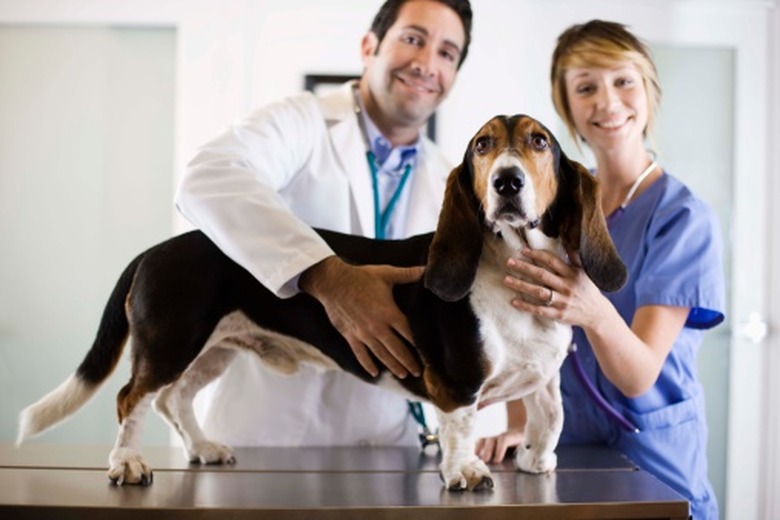Serratia Marcescens In Dogs
Serratia marcescens is a Gram-negative bacterium of the Enterobacteriaceae family. The bacterium occurs in water, soil, plants and the gastrointestinal tract. Discovered in 1819 and originally considered harmless, Serratia marcescens was classified as a human pathogen in the 1960s. It has proven to be an opportunistic pathogen for humans and domestic animals. Immunocompromised patients are at the greatest risk of infection. Human infection is frequently associated with hospital acquired infections. Dogs with suspected infection by Serratia marcescens must be immediately evaluated and treated by a veterinarian.
Transmittal
Transmittal
Serratia marcescens is transmitted through wounds, catheters and ventilators. Open wounds and surgical sites are frequent targets of the bacteria. Contaminated saline solutions, disinfectants and surgical sponge pots have been infected with it and transmitted to animals. Serratia marcescens does occur naturally in the environment and exposure does not guarantee an infection will occur. Dogs are exposed constantly to the bacteria with no ill results. Due to the opportunistic nature of the bacteria, it is an immunocompromised dog which is at greatest risk of infection.
Symptoms
Symptoms
Immunocompromised dogs are susceptible to invasion by Serratia marcescens. Lethargy, septicemia, gastrointestinal upset, urinary tract infections and pneumonia can be caused by the bacteria. Confirmed dog infections include Serratia marcescens in conjunction with a dental extraction, Aortic Endocarditis and contamination of disinfectants in veterinary hospitals. The infection can be secondary to an existing medical problem and can seriously complicate the treatment.
Treatment
Treatment
Antibiotic therapy is prescribed for an infection caused by Serratia marcescens. However, it is notoriously resistant to many antibiotics. It is vital the correct antibiotics are administered. The veterinarian will confirm the presence of the infection with a culture and prescribe the appropriate antibiotic therapy. The health of an infected dog may already be compromised by an existing medical issue. The addition of a Serratia marcescens infection can be a serious complication and requires immediate recognition and treatment.
Prevention
Prevention
Unfortunately, pet owners cannot control the internal environment of a veterinary hospital or the environment which naturally produces Serratia marcescens. Damp environments are conducive to the development of the disease. A pink discoloration is a sign of it. Shower corners, shower heads and grout in the bathroom will show a pinkish film if contaminated. Keeping the bathroom disinfected will help reduce the chance of Serratia marcescens growth. A pink ring around your dog's water bowl indicates the presence of it. Owners should frequently cleanse the water bowl and change the water.
Always check with your veterinarian before changing your pet's diet, medication, or physical activity routines. This information is not a substitute for a vet's opinion.
References
- "Journal of the American Animal Hospital Association"; Fatal Aortic Endocarditis Associated with Community-Acquired Serratia Marcescens Infection in a Dog; Cristina Perez, et al; February 2011
- "Veterinarni Medicina"; Necrotizing Fasciitis Caused by Serratia Marcescens After Tooth Extraction in a Doberman Pinscher: A Case Report; T. Plavec, et al; November 2008
- "Journal of Clinical Microbiology"; Nosocomial Transmission of Serratia Marcescens in a Veterinary Hospital Due to Contamination by Benzalkonium Chloride; J G Fox, et al; August 1981
- "Journal of Small Animal Practice"; Serratia Marcescens Septicaemia in the Dog; Robert J. Wilkins; April 1973
